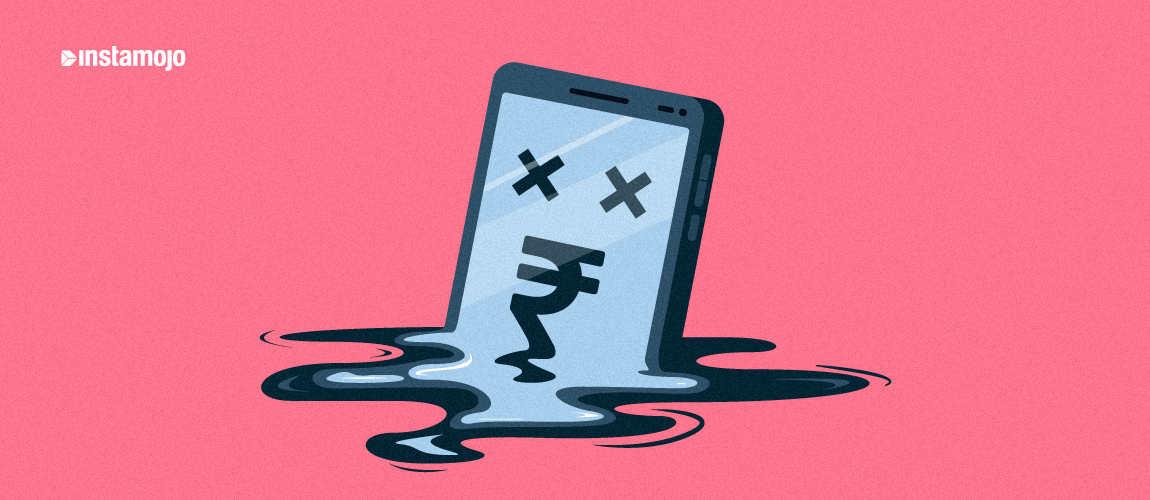Once upon a time, in the kingdom of demonetization, mobile wallets ruled wide and far. They were easy to use and adapt and quickly became a favourite with the subjects. As time passed, a war called payments innovation started and a new hero emerged – UPI (Unified Payments Interface).
Is UPI a threat to mobile wallet’s sustainability? What is the future of digital wallets?
The Problem with Mobile Wallets
India is predominantly a cash-based economy. For a digital payment platform to succeed, it needs to have three key elements working for it:
- Ease of Access
- Interoperability
- Financial sustainability
For wallets, the situation is tricky. While it scores on the ease of access aspect, it loses out on interoperability.
Today, if you want to transfer money from one wallet to another, that is not possible. Also, several applications have put a limit on the minimum amount you need to have in your wallet to be able to use the app. In such cases, cards or cash are a preferred payment method over wallets.
The mobile wallet market is also overcrowded. Since the demonetization, multiple players have saturated the market. Most of them offer little to no differentiation which makes a weak case for mobile wallets. The revenue opportunity is limited and unless these companies keep evolving and adding value to their offerings, the future seems bleak.
UPI’s Edge
UPI wins the interoperability aspect. Since it is built on the IMPS, it allows instant bank-to-bank transfer and allows you to get money in your account instantly. In the case of mobile wallets, if you are receiving money from somebody, you’d have to make the effort to transfer it back to your bank account from the wallet should you wish to. With UPI, the money is sent instantly to your bank account.
Also, you can use one Virtual Permanent Address to accept or receive payments from several banks that support UPI.
So, When’s the Funeral?
Not anytime soon.
While mobile wallets may not make for the strongest contenders in the payments ecosystem, they still have an edge today because the UPI system isn’t as popular. Also, UPI directs money directly into the bank account, which may make it prone to security issues. When it comes to wallets, the money doesn’t directly expose the bank account.
Some experts argue that the death of mobile wallets is inevitable but many suggest mobile wallets will evolve to become something more. Something that enables a “frictionless” payments experience and eventually co-exists with UPI as an alternative payment method.
Have an online business and want to start collecting payments online? Try Instamojo! We not only support UPI and Wallet payments but also allow your customers to pay via Debit/Credit cards and net banking.


7 comments
Thanks for sharing this useful information about mobile wallet digital payments
Hi,
Thanks for Sharing your ideas through this blog. Whenever I go for shopping at marts like Reliance fresh or VMM, There is any option to pay through UPI App. There is only one option available if you are going to pay online and that is Mobile Wallet. Many times I have stuck in this situation. So My conclusion is that, Mobile Wallet is not going to end soon and is also a important part of Digital India.
Mobile Wallets like Paytm, Freecharge, Mobikwik are for instant online payment and UPI Apps like PhonePe, CUPays, Tez are for instant Online Money transfer.
A Bitcoin wallet is a software program where Bitcoins are stored. To be technically accurate, Bitcoins are not stored anywhere; there is a private key (secret number) for every Bitcoin address that is saved in the Bitcoin wallet of the person who owns the balance.
This blog is very great, i like this page and share. This blog is very usefull. Digital payment through mobile wallet is very secure.
hello Rapti,
this is a great information about mobile wallet much more
thanks for sharing with us.
ITS A GREAT …MOBILE VALLET MUCH MORE SECURE
Hi Rapti,
It true that there are many option of wallet are available in Google App for mobile. This blog was very informative & it has given me more information how the digital payment may or may not evolve in its future.